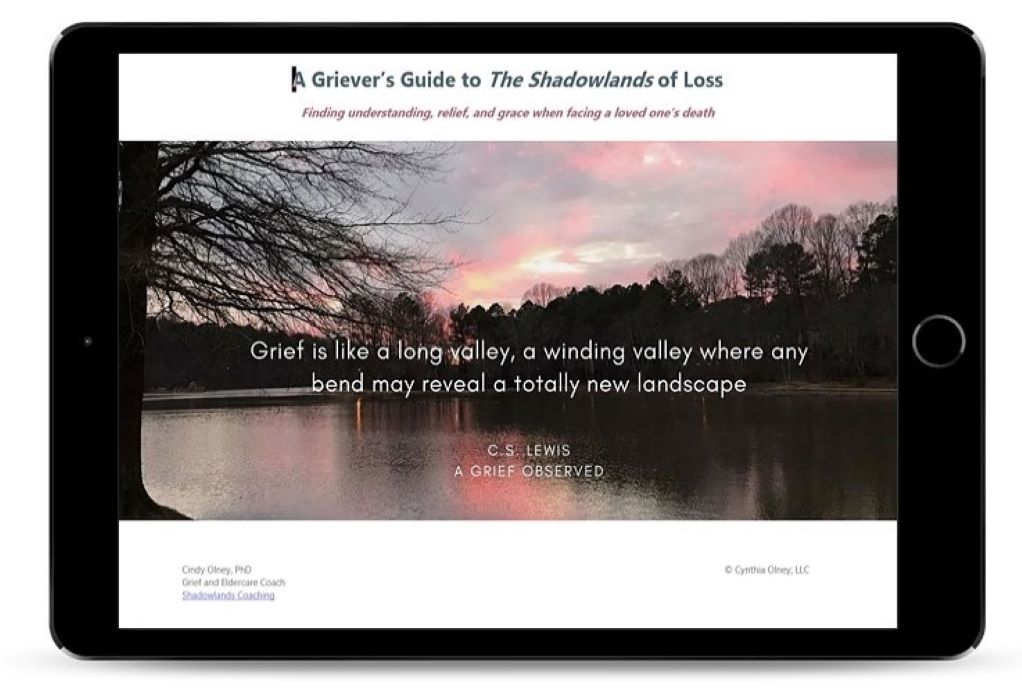“Mom, what did you and Dad decide you wanted done with your remains?”
“Oh, we figured we’d leave that up to you kids.”
It wasn’t the response I expected.
That’s because my parents were superstars when it came to getting their affairs in order.
In their early 70s, my parents moved into a 55+ community called a continuing care retirement community. They paid a hefty upfront fee to make sure they’d have a spot in assisted living or a nursing home if they ever needed it. They also got their financial affairs in order and even prepaid for their cremation.
Their preparation was a gift to my brother and me. It saved us many headaches and heart-wrenching decisions.
So, when Mom said they didn’t plan for final placement of their remains, I was surprised.
And a bit panicky.
You see, I still had the cremated remains of all of my cats. I could never bring myself to scatter their ashes.
If I couldn’t let go of my pets, how on earth would I face final committal of my parents?
A Plan Emerges
My mother died about a year after that conversation. My father kept her remains in a lovely urn in his apartment and, later, in his nursing home room. He passed five years later.
Fortunately, those five years were enough time for me to plan.
After my mother died, I’d made a major life change. I became a life coach specializing in helping people cope with grief and life after loss. To deepen my understanding, I completed an end-of-life doula training program.
That training led me to contemplate the meaning of death and my beliefs about living a meaningful life.
I also came to understand our relationships with our loved ones don’t end when they die. They’re with us as long as we walked the earth. My parents now lived in my memories, my moral compass, my sense of humor, and my stubborn streak.
That’s why I couldn’t scatter their ashes across a mountain top or into the ocean. I needed to place my parents’ remains where they’d stay put. I needed to know where to find them when needed.
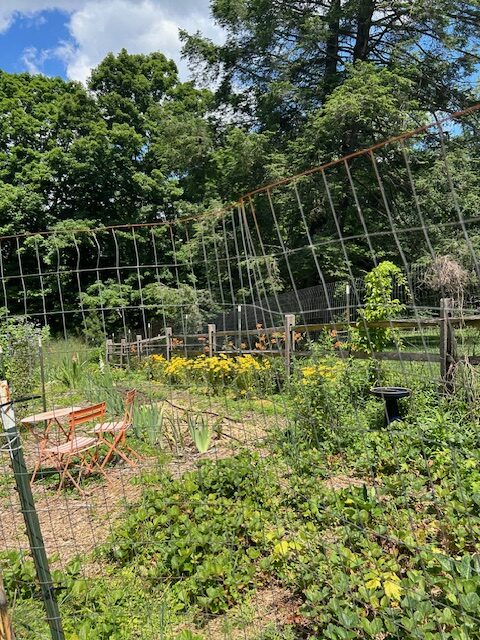
Doula training also introduced me to various forms of burial, including natural, or green, burial. A natural burial is a form of interment done without a vault, casket, or embalming fluids. Rather than protecting a corpse from decay, natural burial encourages nature to take its course.
Natural burial aligned with my values, my love of the natural world, and my sense of service. My body would return to the earth to nourish new life in a final offering to the world I loved.
With a little research, I learned that most natural burial cemeteries accept cremated remains.
That settled it. I would bury my parents in a natural burial ground. I could visit when I wanted. And I could join them when my time came.
It didn’t take long for me to find one in the perfect location.
Doula training also introduced me to various forms of burial, including natural, or green, burial. A natural burial is a form of interment done without a vault, casket, or embalming fluids. Rather than protecting a corpse from decay, natural burial encourages nature to take its course.
Natural burial aligned with my values, my love of the natural world, and my sense of service. My body would return to the earth to nourish new life in a final offering to the world I loved.
With a little research, I learned that most natural burial cemeteries accept cremated remains.
That settled it. I would bury my parents in a natural burial ground. I could visit when I wanted. And I could join them when my time came.
It didn’t take long for me to find one in the perfect location.
Penn Forest Natural Burial Park was located in Allegheny County, right outside of Pittsburgh. My mother was a native of the city’s North Hills. Although she moved away after college, Pittsburgh was always home to her. My father grew up 45 miles away in one direction. I grew up 45 miles in the other.
My husband and I scheduled a visit.
The Grand Tour
Penn Forest Natural Burial Park is located in Gibsonia, PA. It spans 35 acres of mostly woodlands. To get there, you drive along windy, hilly roads until you forget there’s a major city nearby.
Caretakers Laura and Deanna met us in the parking lot for a tour of the grounds. They were dressed for the elements in long pants, sturdy shoes, and sun hats.
From the parking lot, Laura pointed out the cutting garden, tended by volunteers. Family members were invited to gather flowers for their loved ones’ graves.
We followed our guides along a gravel road through mostly woods. They pointed out a scattering garden, marked by a stone wall and a gravel-covered seating area. The garden consisted of dense weeds that were never trimmed, so as not to disturb the remains.
We walked past a sunny meadow, the only part of the burial forest that was mowed regularly. Bodies were buried there. Many had embedded grave markers made of stone native to the area.
Most of the burial ground was thick woods where weeds grew wild. Again, most markers were embedded and hidden in ground cover.
Not all graves were marked, however. Many of the deceased wanted to be buried without a trace. The burial fees went toward the careful records maintained by Penn Forest that could help you locate your loved one’s grave.
“We’ll come out and weed-whack the gravesite for a family visit if you give us some notice,” Laura promised.
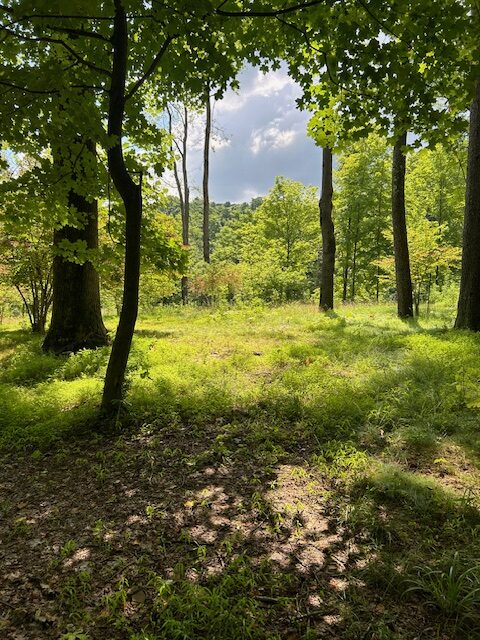
The cemetery is designed to be both a burial ground and a public green space. There are hiking trails open to the public and a yoga hut and a goat farm. It hosts gatherings and educational events for the community.
It was perfect.
Before the trip, I second-guessed my choice. I worried that the wildness of the place would feel wrong. Like I was abandoning my loved ones in the middle of the woods.
On the contrary, the dead were among so much life. Flora. Wildlife. Farm animals. Visitors.
We bought a family plot in a perfect location. There was a break in the tree canopy where sun poured down on the gravesite. In one direction, we could clearly see a nearby mountain.
I grew up on a mountain just like it. A mountain where my father hunted and grew vegetables. Where my mother sat on the porch, drinking coffee and gossiping with neighbors.
My husband agreed. He’d been a good sport. Like most people, he wasn’t one for thinking or talking much about death and dying. Yet, he genuinely liked our choice.
“Plus,” he added, “if anyone wants to dance on my grave, they’re going to have a helluva time finding it.”
The Burial
A few months later, my family took a pilgrimage to Penn Forest Memorial Burial Park to bury my parents.
My brother, who had lived near my parents, was in charge of their remains. He had the cremation society transfer their ashes from their fancy urns into simple, biodegradable boxes. He and his family drove them from Virginia to Pennsylvania.
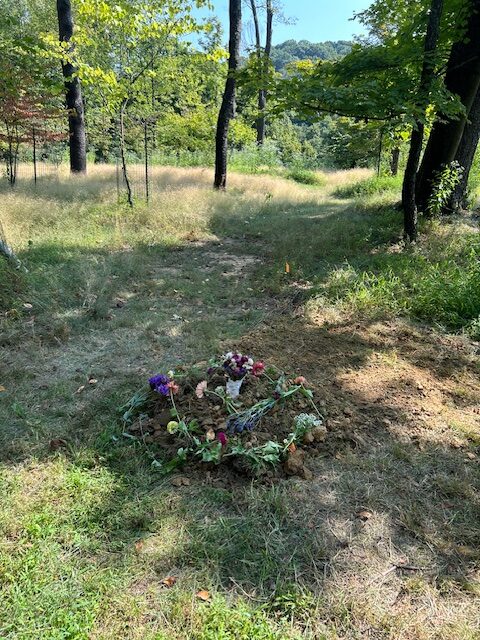
Laura led us to their grave, which she had dug herself. It was a perfectly shaped square about three feet deep, wide enough for two shoeboxes. A pile of dirt stood nearby, with two shovels sticking up. We could lay the ground over my parents, or Laura would do it, if we preferred.
My brother and I placed the boxes in the hole. I threw a few flowers from the cutting garden on top of them. We took turns shoveling, with Laura pitching in, until the entire mound covered their remains.
Then, my niece and I arranged more flowers in the shape of a wreath. My sister-in-law put a bouquet she’d brought in the middle.
We stood together for a while. We stood together until we were all ready to leave.
My soul felt settled. My parents were home.
Mother Knew Best
I’m now grateful that my parents left the responsibility of their burial up to my brother and me.
The long good-bye allowed me to mourn. Finding the cemetery. Choosing the right plot. Gathering with my family in a remote corner of Pennsylvania to lay them to rest.
It allowed me to make meaning out of the hardest losses of my life. It helped me honor my parents through time, contemplation, attention, and action.
Funerals and burials aren’t for the dead. They’re for the living. The bereaved.
Burying my parents was an important part of my grief journey. It helped me realize they weren’t really gone.
I had released them so they could become part of the earth I was standing on. The ground that, eventually, would also claim me. Along with my husband and my cats.
In burying my parents, I found a way for ME to rest in peace.
Want to Know More About Grief Coaching? Let's Chat!
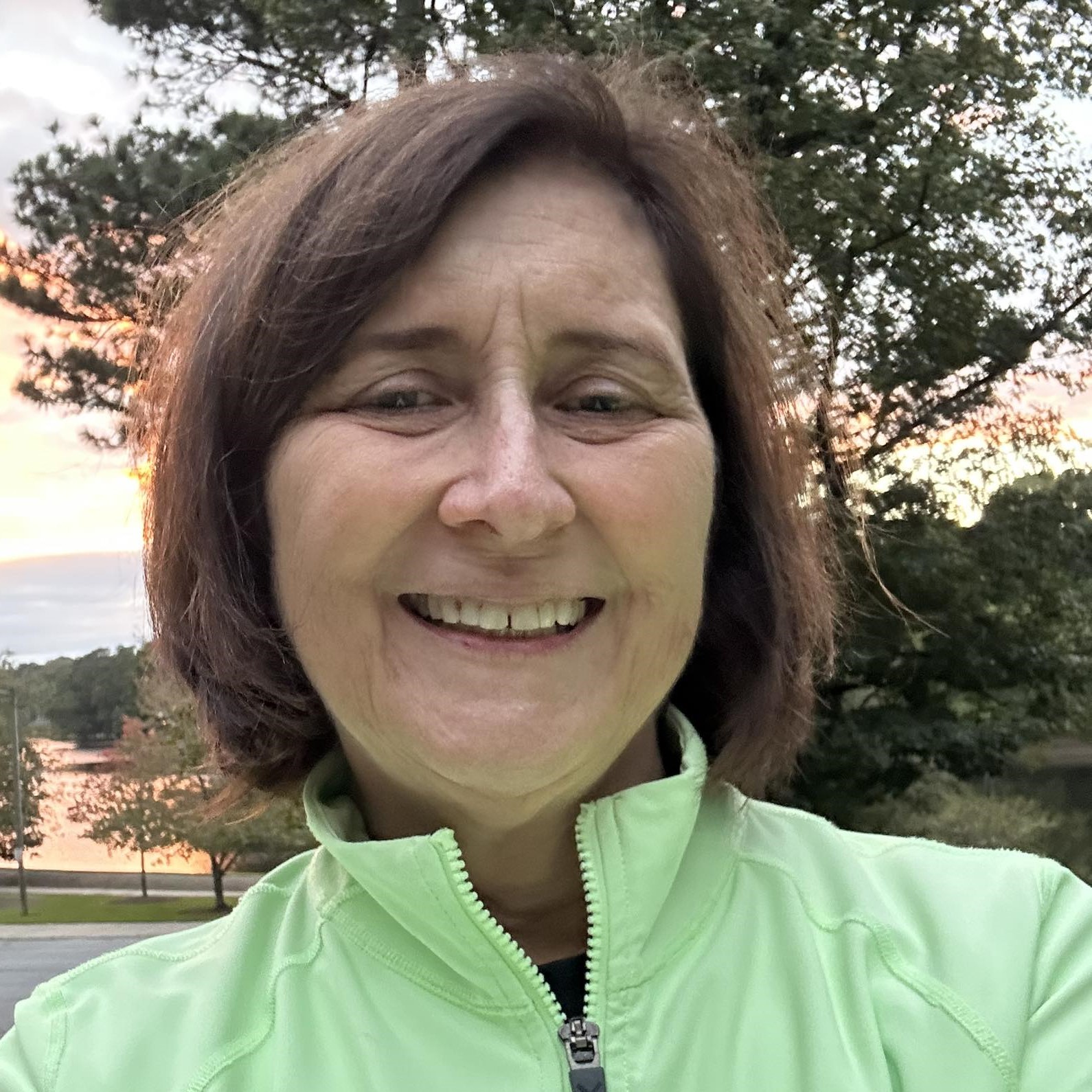
Do you feel stuck in grief? Worried that you'll have to live in deep sadness for the rest of your life? Let’s chat.
I'll tell you about how my grief coaching program can help you consciously engage with your grief so you can feel better more quickly and start seeing progress toward grief recovery. We'll also talk about other stressors that may be interfering with your process, like family conflict or anxiety over living alone.
Click here to schedule a call. Rather connect through email? Send your questions to cindy@shadowlandscoaching.com.
Get A Griever's Guide to the Shadowlands of Grief
ave you recently lost someone dear to you? Or are you worried about someone who has? Download your free copy of A Griever's Guide to The Shadowlands of Loss. It covers some key elements to grieving and a few helpful strategies that can ease your experience of grief.
